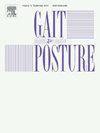4-meter walk test in patients with Parkinson’s disease: A reliability and validity study
IF 2.2
3区 医学
Q3 NEUROSCIENCES
引用次数: 0
Abstract
Objective
The purpose of the study was to examine the test-retest reliability of the 4-Meter Walk Test (4-MWT), the minimum detectable change (MDC) in the 4-MWT, and the concurrent and known-group validity of the 4-MWT in patients with Parkinson Disease (PwPD).
Design
A total of 42 PwPD and 33 healthy people participated in this study. Reliability was quantified using intraclass correlation coefficients (ICC) and the MDC. The 4-MWT was administered with a fast walking protocol. Validity was assessed by correlating the 4-MWT times with the scores of the 10-Meter Walk Test (10-MWT), the Dynamic Gait Index (DGI), the Timed Up and Go (TUG) Test, the Freezing of Gait Questionnaire (FOG-Q), the Hoehn and Yahr (H&Y) Scale, and the Movement Disorders Society-Unified Parkinson’s Disease Rating Scale (MDS-UPDRS). The 4-MWT times were also compared between fallers and non-fallers among PwPD.
Results
The 4-MWT demonstrated excellent test-retest reliability (ICC= 0.957). The MDC was determined as 0.14 m/s. The 4-MWT had fair to excellent correlations with the other outcome measures (correlation coefficients ranged from −0.428–0.937; p < 0.05 for all). Significant differences in the 4-MWT were found between fallers and non-fallers with PwPD (p < 0.05).
Conclusion
The 4-MWT has excellent test-retest reliability, concurrent and known-group validity for PwPD. 4-MWT may be a useful test method for assessing forward walking in the absence of adequate space and equipment in order to monitor the progression of the disease and the effectiveness of the treatments applied.
帕金森病患者4米步行试验:信度和效度研究
目的探讨帕金森病(PwPD)患者4米步行测验(4-MWT)的重测信度、最小可检出变化(MDC)以及4-MWT的同期效度和已知组效度。共有42名PwPD和33名健康人参与了本研究。信度采用类内相关系数(ICC)和MDC进行量化。4-MWT采用快走方案给药。通过将4-MWT次数与10米步行测验(10-MWT)、动态步态指数(DGI)、计时起身和行走测验(TUG)、步态冻结问卷(fogq)、Hoehn和Yahr (H&;Y)量表和运动障碍学会统一帕金森病评定量表(MDS-UPDRS)的得分进行相关性评估,以评估有效性。还比较了PwPD患者中跌倒者和非跌倒者的4-MWT时间。结果4-MWT具有良好的重测信度(ICC= 0.957)。MDC为0.14 m/s。4-MWT与其他结局指标具有相当至极好的相关性(相关系数范围为- 0.428-0.937;P <; 0.05)。4-MWT在PwPD患者和非患者之间有显著差异(p <; 0.05)。结论4-MWT对PwPD具有良好的重测信度、并发效度和已知组效度。4-MWT可能是一种有用的测试方法,用于评估在没有足够空间和设备的情况下向前行走,以监测疾病的进展和所应用治疗的有效性。
本文章由计算机程序翻译,如有差异,请以英文原文为准。
求助全文
约1分钟内获得全文
求助全文
来源期刊

Gait & posture
医学-神经科学
CiteScore
4.70
自引率
12.50%
发文量
616
审稿时长
6 months
期刊介绍:
Gait & Posture is a vehicle for the publication of up-to-date basic and clinical research on all aspects of locomotion and balance.
The topics covered include: Techniques for the measurement of gait and posture, and the standardization of results presentation; Studies of normal and pathological gait; Treatment of gait and postural abnormalities; Biomechanical and theoretical approaches to gait and posture; Mathematical models of joint and muscle mechanics; Neurological and musculoskeletal function in gait and posture; The evolution of upright posture and bipedal locomotion; Adaptations of carrying loads, walking on uneven surfaces, climbing stairs etc; spinal biomechanics only if they are directly related to gait and/or posture and are of general interest to our readers; The effect of aging and development on gait and posture; Psychological and cultural aspects of gait; Patient education.
 求助内容:
求助内容: 应助结果提醒方式:
应助结果提醒方式:


